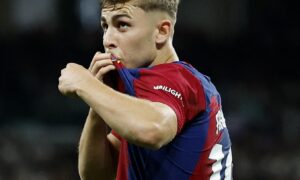Cristiano Ronaldo is a player who will be unforgettable for the fans who visit Old Trafford. A United player grabbing a Ballon D’or looked like a dream until the legendary striker did it himself way back in 2008.
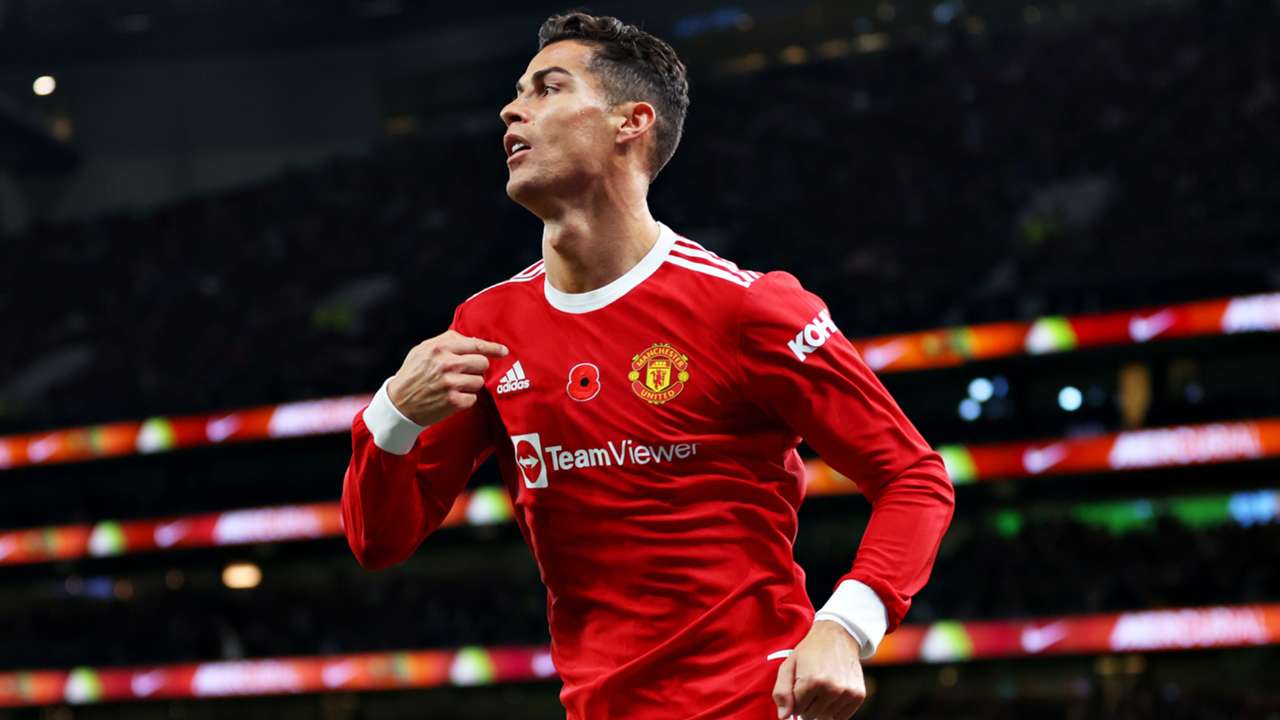
He and Lionel Messi has never failed to dominate the football world for the next 10 years. Cristiano Ronaldo is already the all-time leading goalscorer with 807 goals to his name.
Not just the club career but he has also been the leading goalscorer on International stages for Portugal. Such was his dominance that no coach ever tried to drop him from the starting XI.
This described the fact that he has made over 1100 appearances and there are very few players who have been able to match those numbers. Ronaldo once said: “Give me a chance and I will score 9/10 times”
Must Read: Cristiano Ronaldo joins the ‘100 goal’ Premier League club
This quote basically sums up how confident he is when he moves in scoring positions. Whether it’s about creating gaps, running between the defenders, sneaking between the center-backs, or hitting those jaw-dropping free-kicks, he has done it all.
Persistent training sessions and his attitude towards the sport will make him last even in his 40s.
1. Cristiano Ronaldo’s First Tactical Play Under Sir Alex Ferguson
Ronaldo possessed the speed, agility, and dribbling ability to play as a wide player. However, his attitude drew a lot of flak, and he was frequently accused of having no end product.
To some part, this was accurate, since Cristiano only scored three goals in 25 games, but his dazzling style of play drew Sir Alex Ferguson’s attention when Lisbon defeated United 3-1 in a friendly match. It compelled Ferguson to make Cristiano the most expensive teenager in the United Kingdom at the time.
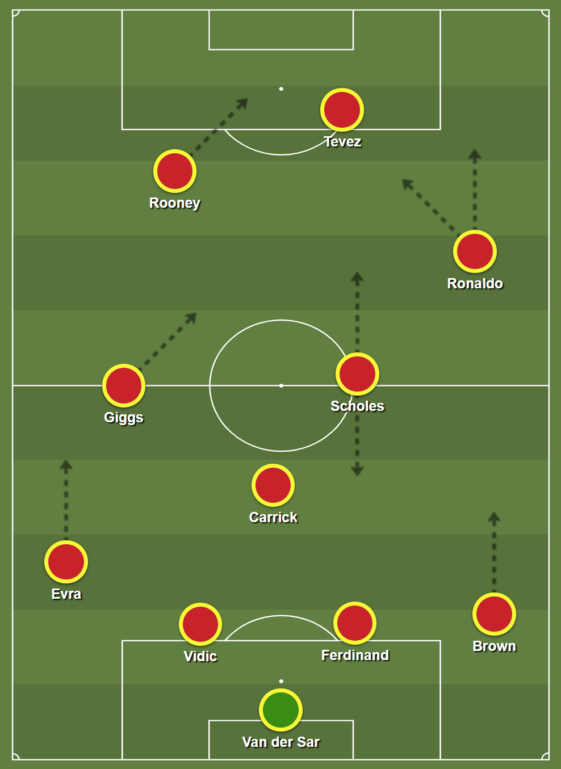
Ronaldo enhanced his strength and speed, focusing less on showmanship and more on the final product. Sir Alex allowed him more freedom in his position, allowing him to cut inside more frequently.
Carlos Tevez joined United in the 2007/08 season, and the front three were usually Rooney, Tevez, and Ronaldo.
Sir Alex gave the three players complete positional freedom, resulting in wonderful fluidity. This made Ronaldo more difficult to mark since he would alternate between playing centrally and on the left, confusing defenders.
Also Read: Daniel Levy ignored scouting Cristiano Ronaldo during his Sporting days
2. Cristiano Ronaldo’s Transformation From A Winger To A Complete Striker
Cristiano decided to join Real Madrid, where he would have a more defined role. During this time, Madrid played a 4-2-3-1 formation with Gonzalo Higuain as the striker, Angel di Maria on the right, and Mesut Ozil as the no.10, with Manuel Pellegrini and then José Mourinho using him on the left.
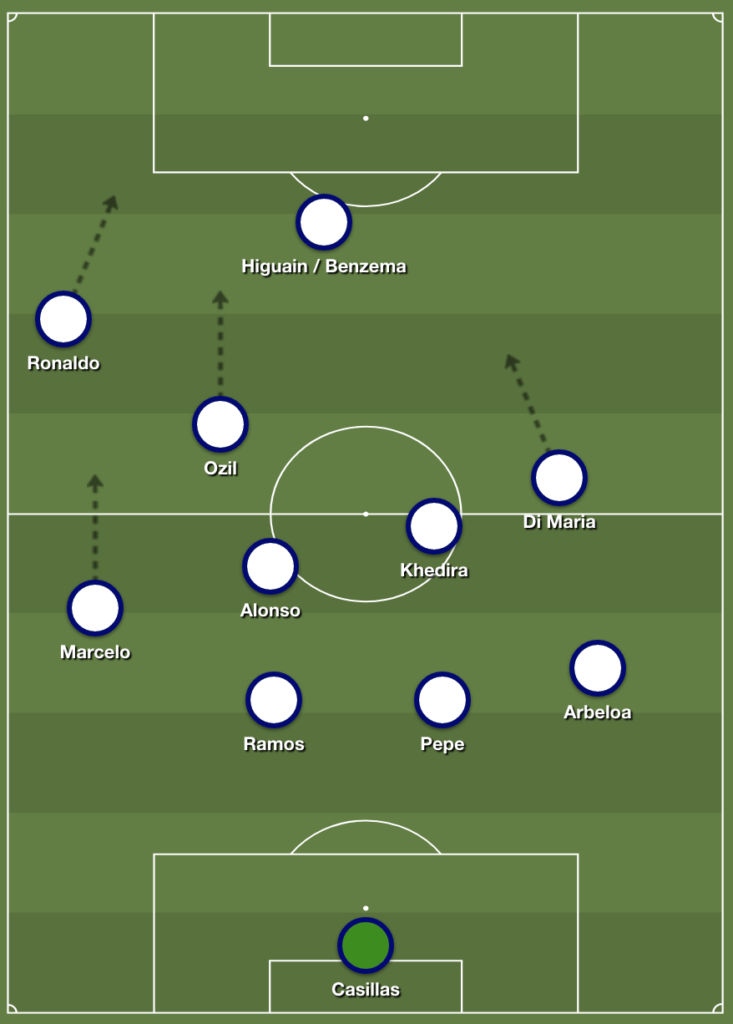
The number ten would attract defenders away from Ronaldo, allowing him to cut inside and play more centrally. When Ronaldo had the ball, he would attract defenders to the left, creating space for Benzema to operate in the center.
This would also free up space on the right for Di Mara to cross the ball into the area, where Higuain or Ronaldo would be waiting to head the ball home.
Ronaldo would only drop down when his team was under pressure, therefore Madrid would often defend in a 4-3-1-2 or 4-4-2 diamond.
The greatest counter attack of all time. pic.twitter.com/aoCK5FWsL5
— TC (@totalcristiano) September 19, 2020
This worked in Mourinho’s favour because it resulted in the formation of probably the best ever counter-attacking team the game has ever seen.
3. Cristiano Ronaldo’s Attacking Movements With Benzema And Bale At Real Madrid
Following Carlo Ancelotti’s appointment as manager in the summer of 2013, Benzema was sold to Arsenal, while Gareth Bale joined for a world-record fee from Tottenham.
There was no longer a no.10 in the hole, as Ancelotti replaced him with two central midfielders, allowing Ronaldo to play more centrally.
Bale’s skill lured defenders away from the right flank, allowing Ronaldo to cut inside, drift inside, and link up with Ronaldo, who would advance and retain the width on the left flank. Because of Benzema’s selflessness, Ronaldo was able to stay high, as Benzema would frequently track back and assist the defense.
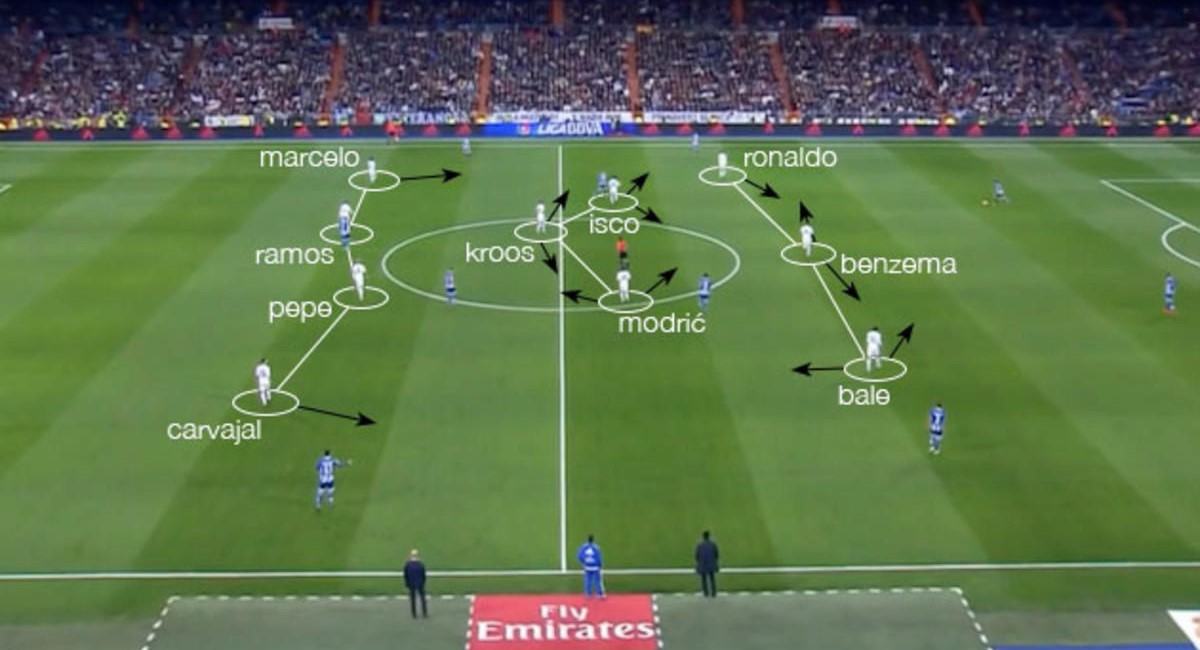
Because Ronaldo was frequently rested to be fit for the biggest games, Zinedine Zidane switched to a 4-4-2 diamond with Ronaldo up top alongside Benzema, whose fluid movement would allow Ronaldo to play more centrally.
Instead of frequently dropping deep to aid in the build-up, he started higher and only dropped deeper to act as a link-up player. He evolved from a lethal wide player to a clinical winger by playing on the shoulders of the defender to get into space or lurk inside the box for a cross.
4. Cristiano Ronaldo’s 4-4-2 Adaptation At Juventus
We witnessed Ronaldo transform into a striker at Juventus in the latter parts of his career. Max Allegri utilized a 4-2-3-1 with Paulo Dybala in the no.10 position or a 4-4-2 with both players beside each other, but it was clear early on that their relationship was uneven, as both players desired to play a more free center role.
This is why Allegri switched to a 4-3-3/4-4–2 hybrid, with Ronaldo on the left flank going inwards, Mario Mandzukic as his striking partner upfront, and Blaise Matuidi as a wide midfielder on the left flank, resulting in a 4-4-2.
Mandzukic’s intellect and adaptability allowed him to shift wider to allow Ronaldo to play as a striker in some scenarios and play higher up the pitch, with the Croatian usually functioning as a no.10 to cover the areas he vacated.
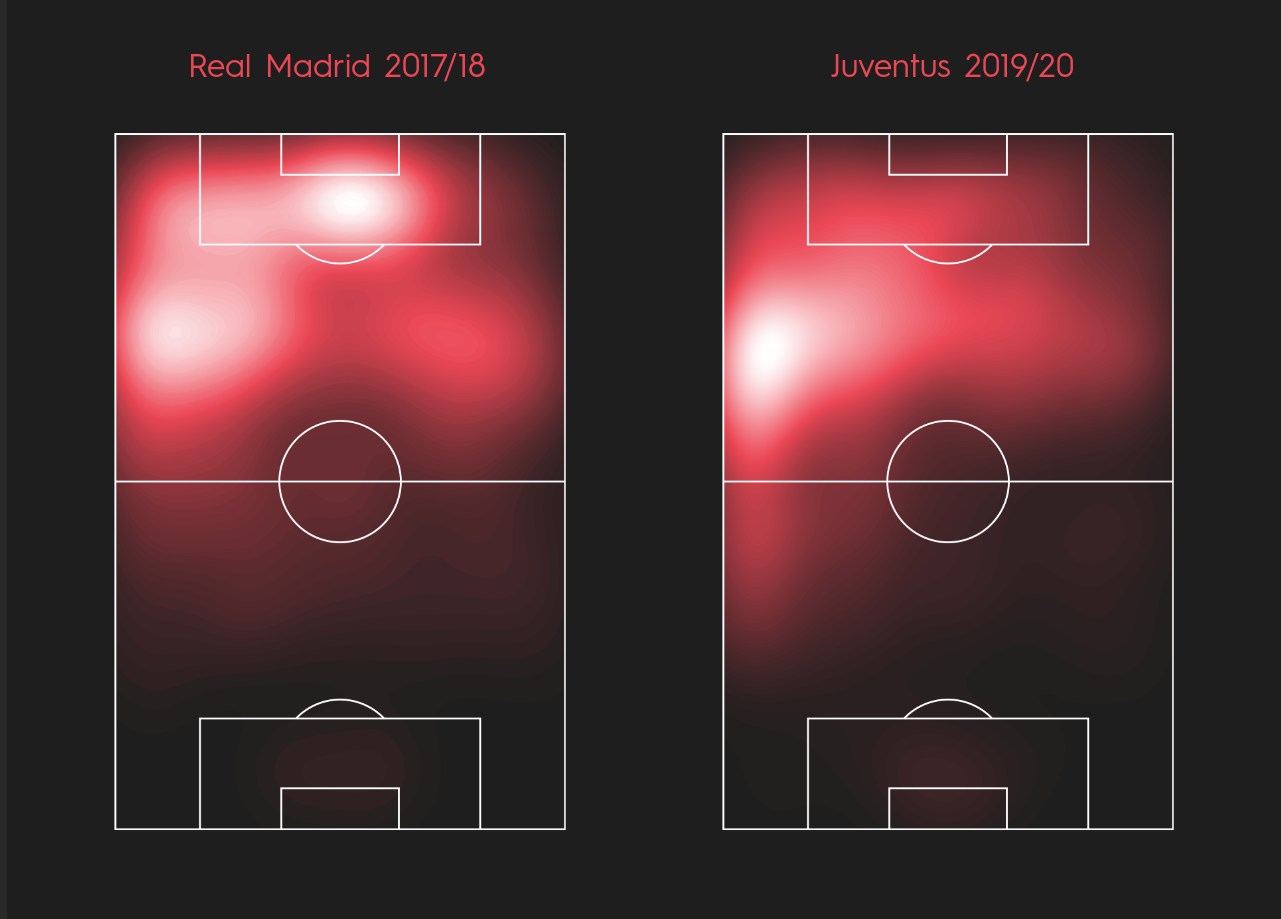
In Italy, Ronaldo remained a constant menace in the box and continued his clinical finishing, and despite returning to Manchester United as a 36-year-old, he remains as lethal as ever.
Cristiano Ronaldo scored a brace in his second appearance for Manchester United, spearheading Ole Gunnar Solskjaer’s 4-2-3-1 formation, demonstrating why he is one of the greatest players in football history.
5. Cristiano Ronaldo Playing As A Poacher at Manchester United
His return to Manchester United was filled with doubts. Although it was a blockbuster transfer, Manchester United’s struggles were the main highlights during those times.
Under Ole Gunnar Solskjaer, Ronaldo scored an impressive nine goals in 13 games and was a regular under him. Solskjaer preferred to use Ronaldo as a central striker with Anthony Elanga and Jadon Sancho on the wings.
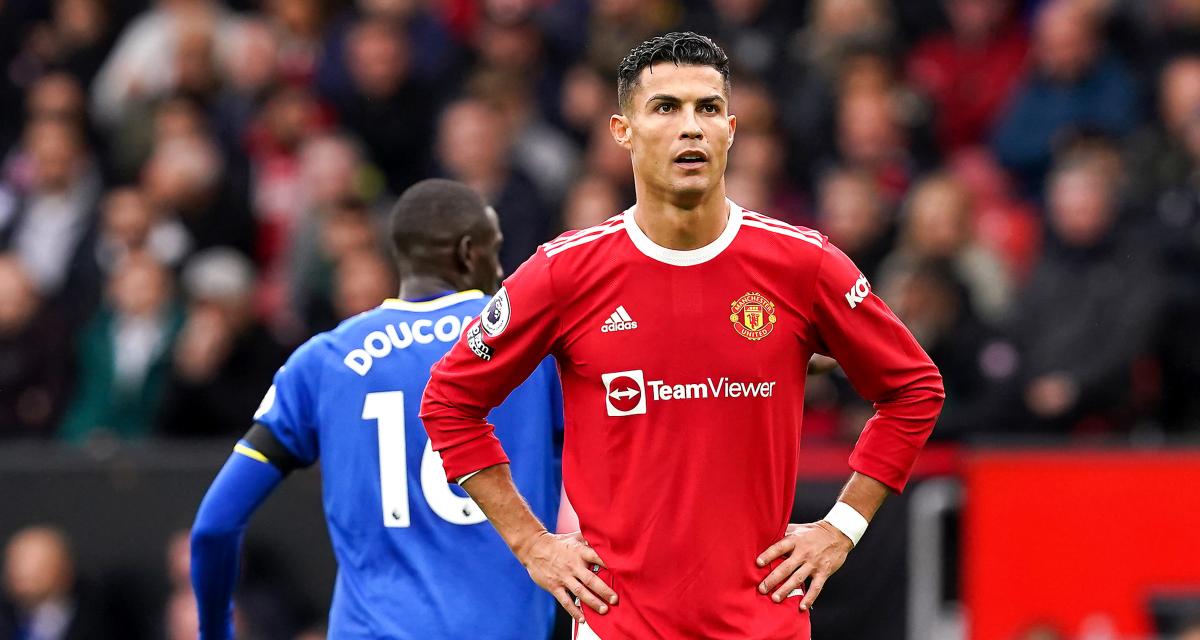
The interesting fact was that Ronaldo scored many of those goals through close-range moves. Man United preferred to put their players in the opposition box. Their set-pieces under Solskjaer were particularly awful.
The same went for crosses through the flanks. Hence they preferred their wingers to move inside the opposition box. Cristiano Ronaldo as evident in his two goals on his debut tried to sneak in behind the defense numerous times. He was successful in avoiding an offside trap.
His role had turned him somewhat like Jamie Vardy of Leicester City who himself plays like a poacher. But that was not just the final statistics, as Ronaldo’s form started declining soon as Solskajer got sacked.
Under Ralf Rangnick, the wingers started to play more defensively by staying behind. That left Ronaldo all alone in the front. Bruno Fernandes’s attacking play started dropping off too.
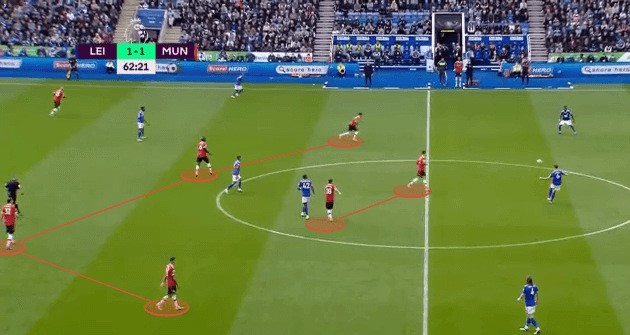
As evident in games against Liverpool and Arsenal where United tried to sit back and soak the pressure. However, even after those circumstances, Cristiano Ronaldo was able to score 23 goals this season due to his ability to turn headers and long rangers into goals.
6. What Will Be Erik Ten Hag’s Strategy While Playing Cristiano Ronaldo Up Front?
Before answering this question, the bigger question would be Will Erik Ten Hag prefer to use Ronaldo or a young forward in his starting XI?
Ten Hag used a similar formation at Ajax. He preferred a 4-2-3-1 formation which includes two wingers, an attacking midfielder, two defensive midfielders, and the striker upfront.
The Dutch manager made his players press the opposition defenders and for that, he used Sebastian Haller. Ten Hag may use Ronaldo but that entirely depends on his tactical set-up.

Over the years, the need for a young striker has been making rounds with numerous players getting linked with the club. Even Ralf Rangnick had admitted that the club is dependent on Cristiano Ronaldo and they needed to sign two young strikers.
This could be another chapter in Ronaldo’s glistening career but we hope that he will be able to make it count next season. Having a leader like him will certainly help the new manager and he will hope that his young players will learn from the star striker’s experience.
Surely, Cristiano Ronaldo is aging like fine wine.


